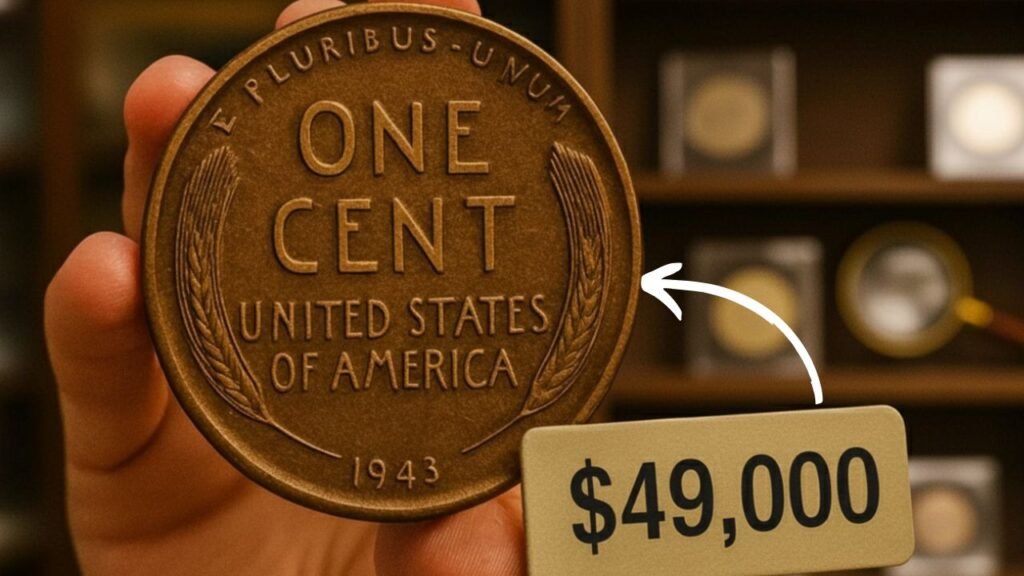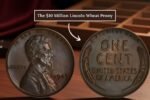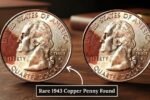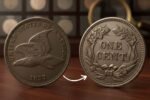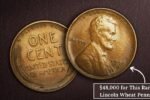What if the old penny lying in your drawer could make you rich? It may sound impossible, but collectors across the U.S. are searching for a rare Lincoin Wheat Penny that could be worth up to $49,000. This small copper coin, once used as pocket change, has now become a treasure for lucky owners. Let’s find out why it’s so valuable.
Why This Lincoin Wheat Penny Is So Special
The Lincoin Wheat Penny, minted between 1909 and 1958, features Abraham Lincoin on the front and two wheat stalks on the back. Millions were made, but a few coins have unique minting errors or limited production that make them rare and extremely valuable.
One of the rarest types — the 1909-S VDB — can sell for as much as $49,000 because of its minting flaw and limited number.
A Quick Look at Its History
The Wheat Penny was first made in 1909 to celebrate Lincoin’s 100th birthday — it was the first U.S. coin to feature a real person. The designer Victor David Brenner added his initials “VDB” on the back, but some people thought they were too large, so production was stopped early.
That’s how the 1909-S VDB penny, made at the San Francisco Mint, became rare and valuable almost overnight.
Why It’s Worth So Much Today
The high value of this coin depends on three things — rarity, condition, and demand.
A 1909-S VDB penny in mint state (graded MS65 or higher) can bring up to $49,000 at auctions. Even worn ones sell for hundreds or thousands.
Collectors love it because it marks the beginning of the Lincoin penny series and represents an early design change that didn’t last long.
Value of Rare Lincoin Wheat Pennies
| Year & Mint Mark | Type / Variety | Condition (Grade) | Estimated Value |
|---|---|---|---|
| 1909-S VDB | Low Mintage, Initials on Reverse | MS65+ | $40,000 – $49,000 |
| 1943 Copper Penny | Wrong Planchet Error | MS63+ | $60,000 – $100,000 |
| 1922 No D | Missing Mint Mark | MS60 | $5,000 – $15,000 |
| 1955 Doubled Die | Error Variety | MS63 | $8,000 – $20,000 |
| 1931-S | Low Mintage | MS65 | $100 – $200 |
Hidden Details Collectors Look For
If you want to check whether your coin is valuable, look carefully for:
- The “S” mint mark below the date (for San Francisco)
- “VDB” initials at the bottom of the reverse side
- A bright copper-red color and sharp strike
If all these signs match, your old penny could be worth a fortune.
Difference Between Regular and Rare 1909 Pennies
| Feature | Common 1909 (No Mintmark) | Rare 1909-S VDB |
|---|---|---|
| Mintmark | None (Philadelphia) | “S” (San Francisco) |
| Initials | Sometimes missing | Clear “VDB” visible |
| Quantity Minted | 27 million+ | Only 484,000 |
| Market Demand | Moderate | Extremely High |
| Potential Value | $5 – $50 | Up to $49,000 |
Expert Tips: How to Protect and Sell Rare Pennies
- Never clean or polish your coins — it lowers their value.
- Keep them in a protective holder and avoid touching them directly.
- Get them graded by PCGS or NGC for official value.
- Sell only through reputed coin dealers or certified auctions for the best price.
The Collector’s Obsession Continues
The Lincoin Wheat Penny is proof that even a tiny coin can hold big history and huge value. With collectors paying tens of thousands for the rare ones, it’s worth checking every old penny in your collection. Who knows — the next $49,000 Wheat Penny might already be in your wallet!
FAQs
How can I tell if my Lincoin Wheat Penny is rare?
Check for the “S” mint mark below the date and the “VDB” initials on the back.
Can I clean my old pennies to make them look new?
No, cleaning damages coins and lowers their value.
What is the most valuable Lincoin Wheat Penny ever sold?
The 1943 Copper Penny has sold for over $100,000 in auctions.
Where can I sell my rare pennies?
You can sell them at PCGS, NGC-certified auctions, or trusted coin dealers.
Are Lincoln Wheat Pennies still in circulation?
Most were taken out of circulation long ago, but rare ones still occasionally appear in collections or old savings jars.
